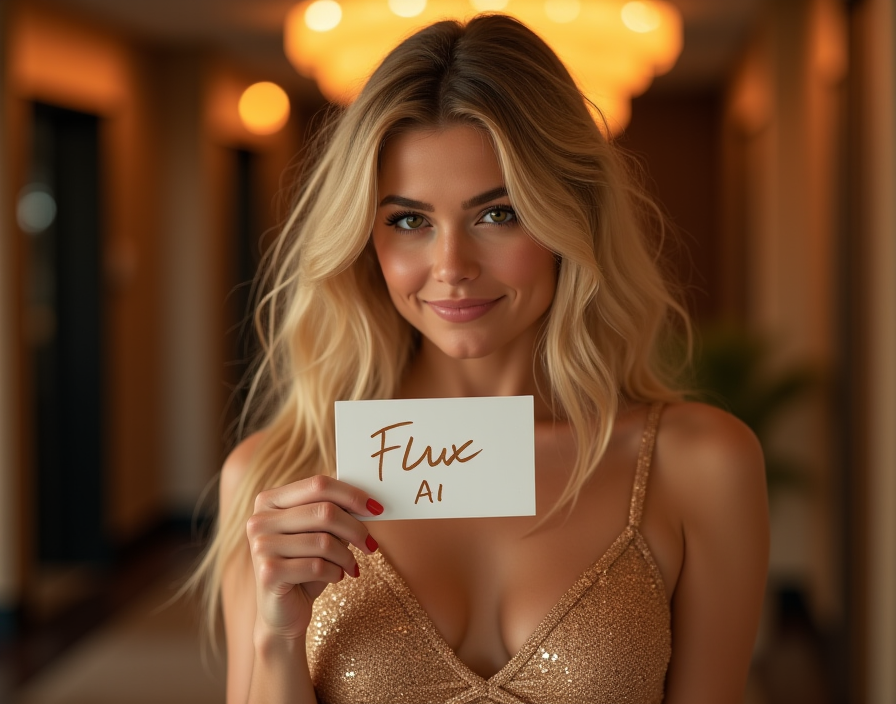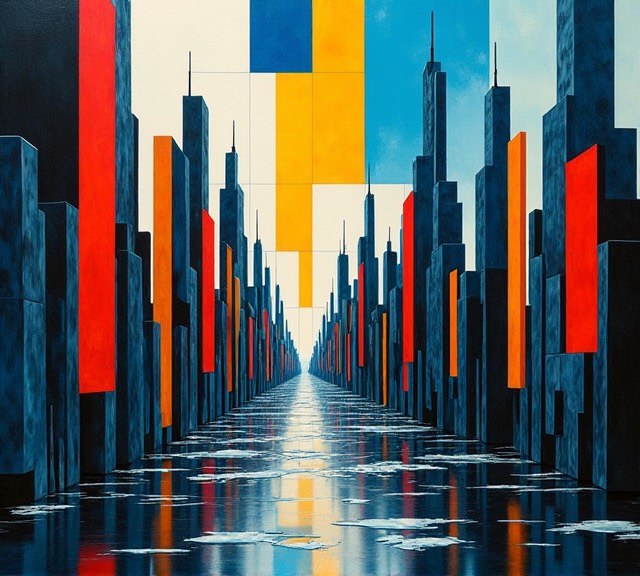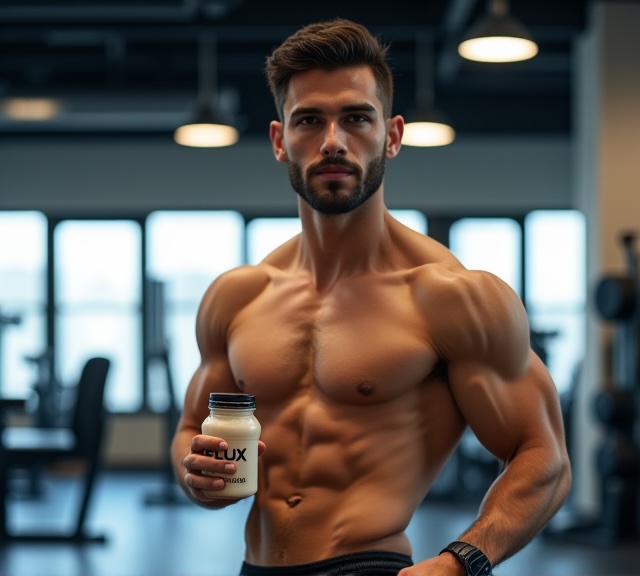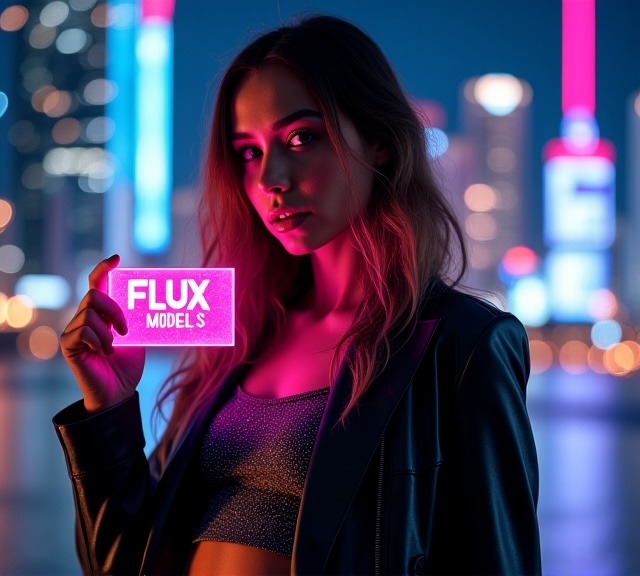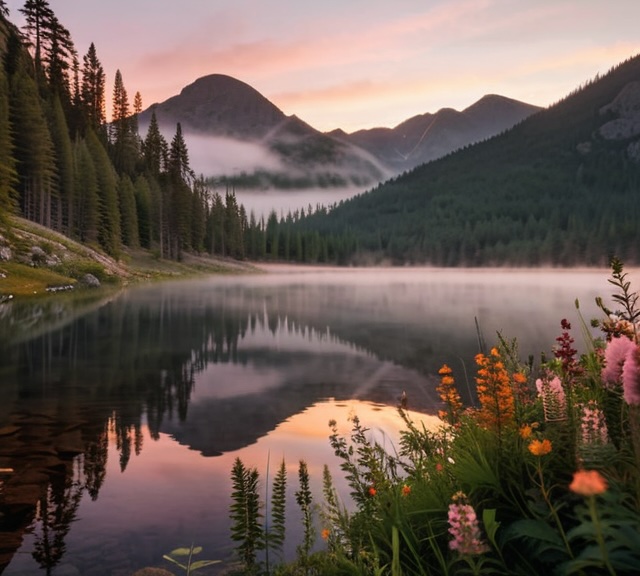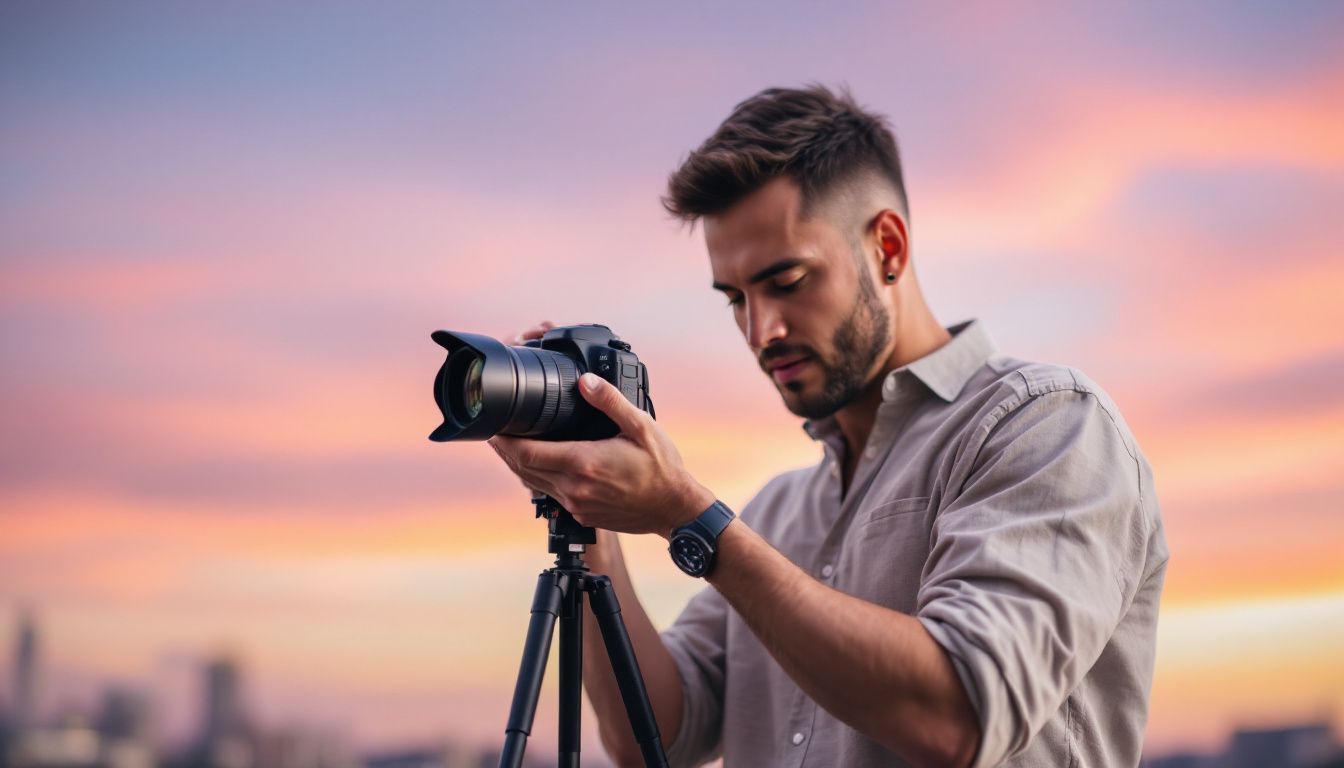
Flux Pro: An In-Depth AI Image Generator Review
Explore our in-depth review of Flux Pro! We analyze its strengths, weaknesses, and creative output across diverse text-to-image prompts. Discover how this AI im...

The Flux AI Model by Black Forest Labs is an advanced text-to-image generation system that converts natural language prompts into highly detailed, photorealistic images using sophisticated machine learning algorithms.
The Flux AI Model by Black Forest Labs is an advanced text-to-image system that converts natural language prompts into photorealistic images. It excels in realism, prompt adherence, and versatility, catering to artists, designers, and content creators.
The Flux AI Model is an advanced text-to-image generation system developed by Black Forest Labs. It represents a significant advancement in the field of artificial intelligence, particularly in image generation. Flux AI utilizes sophisticated machine learning algorithms to convert natural language prompts into highly detailed and photorealistic images. By interpreting complex descriptions, the model can render visuals that closely match the user’s input, thereby pushing the boundaries of what is possible in AI-driven image synthesis.
Generated by Prompt: Beautiful white woman with long hair speaking as president of USA
Flux AI is a suite of open-source text-to-image models designed to generate images based on textual descriptions. Developed by Black Forest Labs, the model leverages cutting-edge technology to produce high-quality images that exhibit remarkable realism and detail. Flux AI comes in several variants, each tailored for specific use cases:
The Flux AI model stands out due to its ability to interpret natural language prompts accurately. Unlike some other AI image generators, Flux AI does not require users to input keywords or follow a specific syntax. Instead, users can describe the desired image in everyday language, and the model will generate an image that closely matches the description.
Flux AI is used by a diverse range of individuals and professionals, including digital artists, graphic designers, content creators, and AI enthusiasts. By providing a textual description, users can harness the power of Flux AI to generate images that match their creative vision. The model is particularly useful where users need to visualize concepts quickly without manually creating the images themselves.
To use Flux AI:
The generated images can then be used in various contexts, such as concept art, advertising, storytelling, and more.
Flux AI is renowned for its ability to produce images of exceptionally high quality. The images generated exhibit a high level of detail, with accurate representations of textures, lighting, and shading. This makes the model suitable for creating photorealistic images that are virtually indistinguishable from photographs.
One of the standout features of Flux AI is its proficiency in interpreting natural language prompts. Users do not need to learn specialized commands or keywords. Instead, descriptions can be written as they would be explained to another person, lowering the barrier to entry and allowing individuals without technical backgrounds to utilize the model effectively.
Flux AI demonstrates a high degree of accuracy in adhering to the input prompts, carefully considering each element described and incorporating it into the generated image. This ensures the output aligns closely with the user’s intent, reducing the need for iterative adjustments.
The model can generate images in a wide range of styles—hyperrealistic portraits, artistic illustrations, or stylized renditions—making it a powerful tool for artists and designers wishing to explore different visual aesthetics.
Flux AI excels at rendering complex scenes involving multiple subjects, intricate backgrounds, and detailed environments. It can synthesize images with nuanced spatial relationships and interactions among elements, which is valuable for users needing to visualize multi-faceted concepts or elaborate settings.
Creating effective prompts is essential to leverage the full potential of the Flux AI model. A well-crafted prompt provides clear and detailed information about the desired image, enabling the model to generate accurate and high-quality outputs. Below are guidelines and examples to help users craft prompts effectively.
The model performs best when prompts are written in natural, descriptive language. Instead of listing keywords, compose sentences that fully describe the subject, setting, and desired attributes.
Example Prompt:
“A young woman with long, wavy blonde hair and smokey eye makeup is posing in a luxury hotel room. She is wearing a sparkly gold cocktail dress and holding up a white card with ‘Flux AI’ written in elegant calligraphy. Soft, warm lighting creates a luxurious atmosphere.”
Incorporate specific details about the subject and environment to help the model render the image accurately—mention facial expressions, clothing styles, background elements, and any objects of importance.
Example Prompt:
“A charismatic speaker with short, tousled brown hair and rounded rectangular-framed glasses is captured mid-speech. He is holding a black microphone in his right hand and gesturing with his left. The man is wearing a light grey sweater over a white t-shirt and has a simple black lanyard around his neck with a badge that reads ‘Black Forest Labs’. Behind him, there is a blurred background with a white banner containing logos and text, suggesting a professional conference setting.”
Reference specific artistic styles or movements to influence the visual aesthetic. Mention styles like surrealism, impressionism, or specific artists to guide the model.
Example Prompt:
“Blend the surrealism of Salvador Dalí with the geometric abstraction of Piet Mondrian to depict a melting cityscape. Skyscrapers droop and liquefy, rendered in Mondrian’s primary colors and black grid lines. The sky is divided into rectangles of blue and white, with a few of Dalí’s signature melting clocks scattered throughout.”
Specifying the lighting conditions and mood enhances the atmosphere. Details about lighting (e.g., soft, harsh, warm, cool) and mood (e.g., cozy, eerie, vibrant) help the model render the intended ambiance.
Example Prompt:
“A fit male fitness influencer with short dark hair and stubble stands shirtless in a modern gym. He has defined abs and arm muscles, holding a protein shake in one hand and a card that says ‘Flux Fitness’ in the other. Bright, clean lighting highlights his physique, creating a high-energy atmosphere.”
Specify camera angles, perspectives, and composition for unique and dynamic images.
Example Prompt:
“A stylish young woman with long, wavy ombre hair poses in front of a neon-lit city skyline at night. The image is shot from a low angle to emphasize the towering buildings behind her. She is wearing a sleek black leather jacket over a sparkly crop top and holding up a holographic business card that says ‘Flux Models’ in futuristic font. The card reflects the colorful neon lights, creating a cyberpunk aesthetic.”
Prompt:
“A hyperrealistic portrait of an elderly Inuit woman in her 80s. She has deep wrinkles, weathered skin, and wise, piercing dark eyes. Her silver hair is braided and adorned with traditional bone beads. She’s wearing a fur-trimmed parka. Capture the soft, golden light of the Arctic midnight sun reflecting in her eyes and on her skin.”
Expected Output:
An image that captures the intricate details of the woman’s features, clothing, and cultural elements. The lighting emphasizes her expression and the texture of her skin, showcasing the model’s ability to create highly detailed and realistic portraits.
Prompt:
“A serene mountain landscape at sunrise, with mist rolling over the pine-covered hills. A clear lake reflects the pink and orange hues of the sky. In the foreground, wildflowers sway gently in the breeze. The scene is rendered in high detail, with soft, natural lighting.”
Expected Output:
A vividly detailed landscape image that captures the tranquility and beauty of the natural environment. The model illustrates its capability in rendering realistic landscapes with attention to textures, lighting, and atmospheric conditions.
Prompt:
“An elegant female ballet dancer in a white tutu and pointe shoes performs an arabesque pose in a grand theater. Her hair is in a perfect bun, and her makeup is stage-ready. She gracefully holds a delicate, swan-shaped card with ‘Flux Dance’ written in flowing script. The rich red velvet curtains and ornate gold decorations of the theater create a luxurious backdrop.”
Expected Output:
An image that depicts the dancer with precise attention to her posture, attire, and surroundings. The model effectively renders the complex scene, capturing both the subject and the intricate details of the environment.
Prompt:
“Create an image that fuses the precision of M.C. Escher’s impossible geometries with the bold colors and shapes of Wassily Kandinsky’s abstract compositions. The subject is a surreal cityscape where buildings seamlessly transform into musical instruments. Use Escher’s techniques to create paradoxical perspectives and interconnected structures, but render them in Kandinsky’s vibrant, non-representational style.”
Expected Output:
A visually striking image that combines elements of both artists’ styles. The model demonstrates its ability to interpret and blend different artistic influences into a cohesive and imaginative composition.
Prompt:
“Redesign a modern smartphone as if it were invented in the Victorian era. The device is made of polished brass and wood, with intricate gears and clockwork visible. Replace the touchscreen with an array of tiny levers, buttons, and dials. Include a hand-crank on the side and a small chimney emitting steam. Show the device held in a gloved hand, with a blurred background suggesting a Victorian study with bookshelves and oil lamps.”
Expected Output:
An image that creatively visualizes the concept, combining modern technology with historical design elements. The model showcases its ability to generate detailed product images with imaginative features.
The Flux AI model employs advanced machine learning techniques to interpret natural language prompts and generate corresponding images. Below are technical aspects that contribute to its performance.
The model utilizes sophisticated natural language processing (NLP) algorithms to understand and parse input prompts. It can comprehend complex sentences, recognize context, and identify key elements within the description, allowing for accurate interpretation of the user’s intent.
Image generation capabilities are powered by state-of-the-art algorithms that create images with high resolution and detail. It employs techniques such as deep learning and generative adversarial networks (GANs) to produce realistic and coherent visuals.
Flux AI is designed to be adaptable to various styles and subjects. Its architecture allows scalability, enabling it to handle a wide range of inputs and generate diverse outputs. This flexibility makes it suitable for different applications and user requirements.
Some variants of Flux AI, such as Flux 1.1 Pro and Flux Realism LoRA, are accessible through online platforms. Users can access these models via tools like Anakin AI, which provide interfaces for interacting with the model and generating images.
Flux AI models are accessible through various online platforms that integrate the model into their services. One such platform is Anakin AI, where users can experiment with Flux AI models, including Flux 1.1 Pro and Flux Realism LoRA.
To maximize the effectiveness of the Flux AI model and obtain high-quality images, consider these tips when crafting your prompts:
Be Detailed and Specific
Provide comprehensive descriptions that cover all aspects of the desired image: subject, environment, lighting, mood, and attributes.
Use Natural Language
Compose prompts using natural, conversational language. The model understands context and nuances better with complete sentences.
Specify Styles and Influences
If a particular artistic style or influence is desired, mention these in your prompt to guide the model’s output.
Describe Technical Elements
Include information about camera angles, perspectives, and composition to influence the arrangement.
Experiment and Iterate
Experiment with different prompts and adjust your descriptions based on the generated outputs. Iterative refinement can lead to improved results.
Leverage Negative Prompts (if available)
Some platforms allow the use of negative prompts to exclude certain elements from the generated image. Utilize this feature to refine the output.
Research on AI models, particularly those related to image generation like the Flux AI model, highlights various aspects of how these technologies are being utilized and their implications.
The Flux AI Model is an advanced text-to-image generation system developed by Black Forest Labs. It converts natural language prompts into highly detailed and photorealistic images, using sophisticated machine learning algorithms.
Flux AI Model is designed for digital artists, graphic designers, content creators, and AI enthusiasts who want to generate high-quality images from text descriptions without technical expertise.
Key features include photorealistic image generation, natural language prompt processing, accurate prompt adherence, support for various artistic styles, and the ability to render complex scenes.
Simply input a detailed text prompt describing the desired image. The model interprets the prompt and generates an image matching your description. Platforms like Anakin AI offer access to Flux AI Model variants.
Some variants of Flux AI, such as Flux 1.1 Pro and Flux Realism LoRA, are open-source and accessible via online platforms.
Flux AI Model excels in prompt adherence, photorealism, and user-friendly natural language input, allowing users to generate images without specialized syntax or keywords.
Experience the power of Flux AI Model for stunning, photorealistic image creation from text prompts. Perfect for creators, marketers, and innovators.
Explore our in-depth review of Flux Pro! We analyze its strengths, weaknesses, and creative output across diverse text-to-image prompts. Discover how this AI im...
Explore our in-depth review of Flux Dev! We analyze its strengths, weaknesses, and creative output across diverse text-to-image prompts. Discover how this AI im...
Explore our in-depth review of Flux 1.1 Pro! We analyze its strengths, weaknesses, and creative output across diverse text-to-image prompts. See how this AI ima...
Cookie Consent
We use cookies to enhance your browsing experience and analyze our traffic. See our privacy policy.
